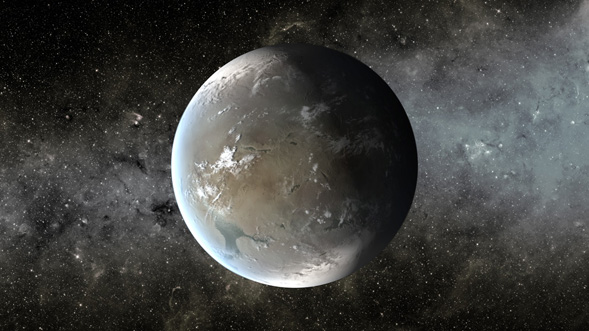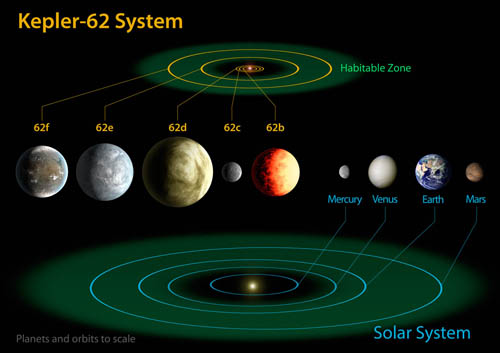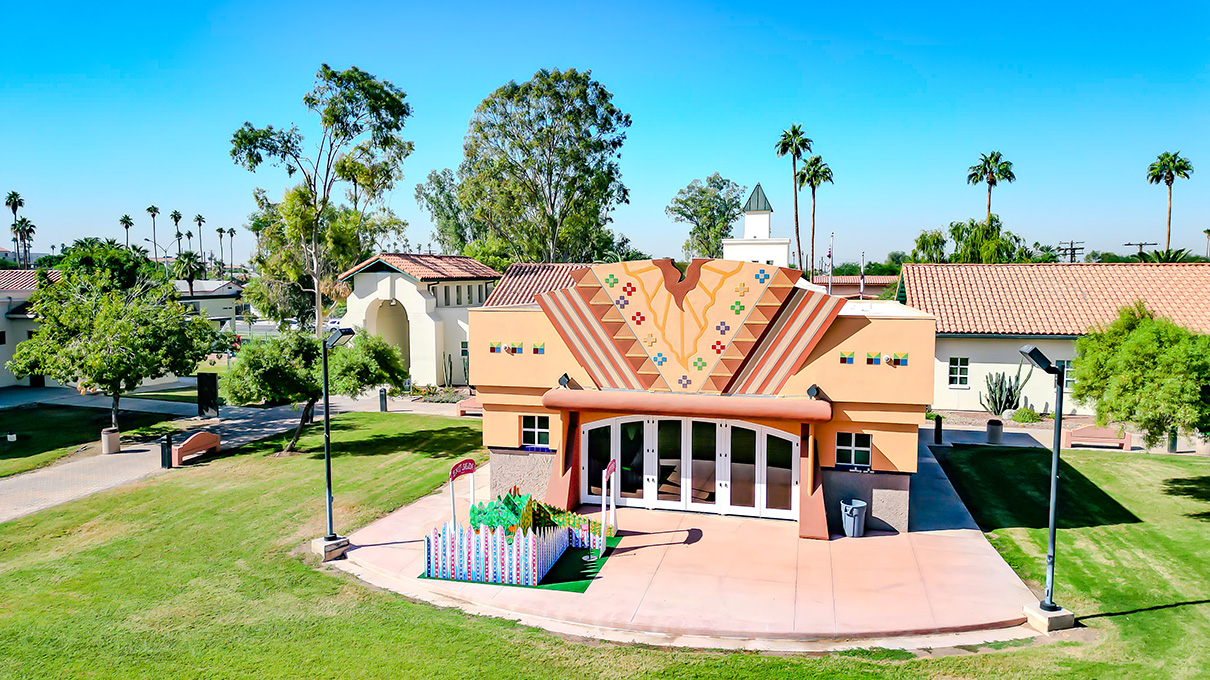Astronomers Discover Two Habitable Zone Super Earths
A team of astronomers, including two from SDSU, have discovered two Earth-like planets with the potential to support life.

A team of astronomers, including two from San Diego State University, today announced the discovery of a five-planet system with two super-Earth-sized planets in the “habitable zone.” The detection was made using NASA’s Kepler space telescope, which launched in 2009, on a mission to find Earth-like planets.
“These two planets are the most Earth-like we have found to date. They are similar in both size and temperature to our planet,” said William Welsh, professor of astronomy at SDSU and co-author of the study published today in the journal Science.
The habitable zone
The habitable zone is a region around a star where liquid water could theoretically exist on a planet’s surface. Since water is a requirement for life as we know it, planets in the habitable zone are particularly interesting to astronomers.
“The composition of the planets is not known, but it is possible they are rocky. If so, and if liquid water is present, there’s a chance these planets could harbor life,” said Welsh.

Much like our Solar system, Kepler-62 has two planets in the habitable zone: Kepler-62e and Kepler-62f.Credit: NASA/Ames/JPL-Caltech.
At only 60 percent and 40 percent larger than the Earth, these two super-Earth planets are the smallest planets yet discovered in the habitable zone.”
The planetary system, known as Kepler-62, contains five planets, ranging from 0.54 to 1.95 times the size of the Earth. The innermost planet orbits its star every 5.7 days, while the outer one takes 267 days to complete one orbit.
The star itself is smaller and fainter than Earth’s sun with 69 percent of the sun’s mass, 64 percent of the sun’s radius, and only 21 percent of the sun’s brightness.
“Since Kepler-62’s star is only a fifth as luminous as our sun, the planets in its habitable zone have to orbit much closer to it, resulting in a much shorter year. For the two planets in the habitable zone, Kepler-62e and Kepler-62f, this is 122 and 267 days,” said co-author Jerome Orosz, associate professor at SDSU.
1,200 light years away
The new planetary system is located 1,200 light-years away, in the constellation Lyra. Its age is estimated at approximately 7 billion years, somewhat older than the solar system.
SDSU’s contribution
Welsh and Orosz have been working on the Kepler mission since 2008, contributing their expertise to the discovery of dozens of new planets.
“The Kepler mission continues to be a great success,” said Orosz who analyzed data from the Kepler telescope to help rule out false positives and confirm that these really are planets.
Welsh worked on estimating the planets’ temperatures and whether they are in the habitable zone.
“All five planets are smaller than twice the size of the Earth, and one is even the size of Mars. This is an absolute gem of a planetary system,” said Welsh.
More information
The investigation of Kepler-62 was led by William J. Borucki, at NASA Ames Research Center. More than 40 researchers in the United States and Europe contributed to the research.
The full paper, “Kepler-62: A five-planet system with planets of 1.4 and 1.6 Earth radii in the Habitable Zone” by W.J. Borucki, et al. is published online in Science Express.
Funding for this work was provided in part by NASA and the National Science Foundation.
More information about SDSU's role in the Kepler Mission.
Related Stories:
Two Earth-Like Planets Discovered - U-T San Diego


